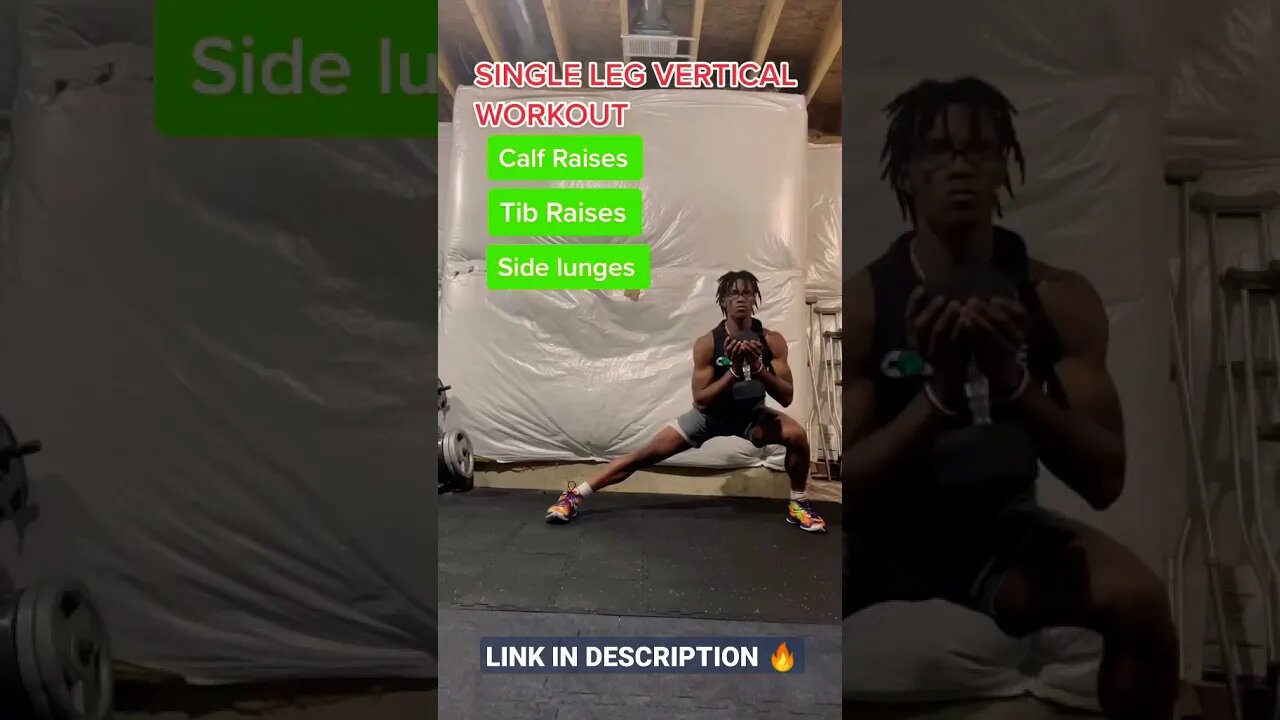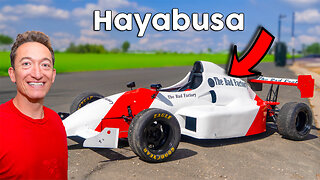Premium Only Content

SINGLE LEG VERTICAL WORKOUT 🦵🔥 #Shorts
THREE EXERCISES TO IMPROVE SINGLE LEG POWER
Explosive Two-Box Step-Up
In most sports, speed and acceleration are critical. How quick you get off the line, take your first step, or move to the ball is often the factor that separates the good athletes from the great ones. The challenge with most single-leg exercises is that they require a fairly high degree of balance, which means a lot of effort must be directed toward movement deceleration.
Here’s one way to progress a basic single-leg exercise—the Step-Up—to allow you to keep accelerating through the movement without having to stop to keep your balance.
These can be performed with dumbbells held at your side—for more posterior chain activation—or with a barbell or safety squat bar on your shoulders—for more quadriceps involvement.
Seated Single-Leg Bench Jump to a Box
If you’re looking at completeness of you training program, learning to quickly activate all available force from a dead stop is an important and novel training stimulus. This ability is typically measured by something called RFP, or Rate of Force Production—the human performance equivalent of a car’s 0-60mph time.
This exercise defuses the Stretch-Shortening Reflex (SSC) that is normally activated during the transition between the lengthening and shortening phase of an exercise. (Think the elastic rebound you get at the bottom of squat that helps push you back upright).
Avoid bouncing, wiggling, or using a big countermovement in your upper body when seated on the bench.
Start by jumping onto an 18-inch block. Progressively increase the height of the box in proportion to ability.
Single-Leg Deadlift with Medicine Ball Slam
Eccentric training—where a muscle actively lengthens under tension—is one of the most effective ways to increase overall strength and power output. Yet most people underutilize or ignore the eccentric component of most exercises.
This is a mistake for two reasons.
First, power is the product of force x velocity. Velocity is a function of speed and force is a function of strength. With this equation, we know that we can improve running and sprinting speed by increasing the amount of leg strength available per stride.
Second, the ability to control joint position and avoid soft-tissue injuries during high-speed movement is largely a function of eccentric control.
Here, we use a Medicine Ball, thrown downward from an overhead position, to create a rapid lengthening contraction that follows the form of single leg deadlift. The over-speed of the ball forces the hamstring and glute to decelerate the upper body as it moves toward the ground.
Explosive Two-Box Step-Up
In most sports, speed and acceleration are critical. How quick you get off the line, take your first step, or move to the ball is often the factor that separates the good athletes from the great ones. The challenge with most single-leg exercises is that they require a fairly high degree of balance, which means a lot of effort must be directed toward movement deceleration.
Here’s one way to progress a basic single-leg exercise—the Step-Up—to allow you to keep accelerating through the movement without having to stop to keep your balance.
These can be performed with dumbbells held at your side—for more posterior chain activation—or with a barbell or safety squat bar on your shoulders—for more quadriceps involvement.
Seated Single-Leg Bench Jump to a Box
If you’re looking at completeness of you training program, learning to quickly activate all available force from a dead stop is an important and novel training stimulus. This ability is typically measured by something called RFP, or Rate of Force Production—the human performance equivalent of a car’s 0-60mph time.
This exercise defuses the Stretch-Shortening Reflex (SSC) that is normally activated during the transition between the lengthening and shortening phase of an exercise. (Think the elastic rebound you get at the bottom of squat that helps push you back upright).
Avoid bouncing, wiggling, or using a big countermovement in your upper body when seated on the bench.
Start by jumping onto an 18-inch block. Progressively increase the height of the box in proportion to ability.
Single-Leg Deadlift with Medicine Ball Slam
Eccentric training—where a muscle actively lengthens under tension—is one of the most effective ways to increase overall strength and power output. Yet most people underutilize or ignore the eccentric component of most exercises.
This is a mistake for two reasons.
First, power is the product of force x velocity. Velocity is a function of speed and force is a function of strength. With this equation, we know that we can improve running and sprinting speed by increasing the amount of leg strength available per stride.
Second, the ability to control joint position and avoid soft-tissue injuries during high-speed movement is largely a function of eccentric control. .
. .
Link do Video: https://youtu.be/fBAMTzRvBI8
-
 LIVE
LIVE
megimu32
1 hour agoOTS: From A-List to MIA! 90s & 2000s Stars Who Vanished
116 watching -
 LIVE
LIVE
TinyPandaface
1 hour agoYour FACE Is A Gaming Channel! | Super Smash Bros w/ THE FELLAS!
87 watching -
 LIVE
LIVE
Flex011
2 hours agoMETAL GEAR SOLID : SNAKE EATER
22 watching -
 21:42
21:42
The Rad Factory
8 hours agoCrotch Rocket Swapped F1 car
1261 -
 LIVE
LIVE
FrizzleMcDizzle
1 hour agoSlaying Zombies
9 watching -
 1:31:55
1:31:55
Glenn Greenwald
4 hours agoMinnesota Shooting Exploited to Impose AI Mass Surveillance; Taylor Lorenz on Dark Money Group Paying Dem Influencers, and the Online Safety Act | SYSTEM UPDATE #507
76.3K27 -

SpartakusLIVE
4 hours agoRUMBLE PREMIUM - AD FREE | In the MAYHEM of the DEMONS and the TATERS, One HERO Will RISE to the TOP
9.5K1 -
 1:05:09
1:05:09
Donald Trump Jr.
6 hours agoMare Liberum: The Next Chapter in Protecting Our Sovereignty, Interview with Erik Bethel | Triggered Ep.271
101K59 -
 6:36:44
6:36:44
StoneMountain64
7 hours ago#1 WARZONE TACTICIAN + New Battlefield Trailer
61.3K7 -
 LIVE
LIVE
LFA TV
14 hours agoLFA TV ALL DAY STREAM - THURSDAY 8/28/25
796 watching